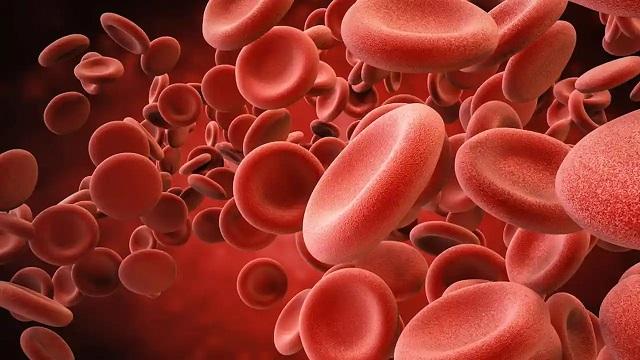
World Hemophilia Day has been celebrated every year on April 17 since 1989, under the auspices of the World Federation of Hemophilia, to commemorate the birthday of Frank Schnabel, founder of the World Federation of Hemophilia (WFH). World Hemophilia Day is celebrated globally on April 17 every year since 1989, in honor of the birthday of Frank Schnabel, founder of the World Federation of Hemophilia (WFH), under the auspices of the World Federation of Hemophilia, a non-profit international organization dedicated to improving the lives of people with hemophilia and other genetic bleeding disorders. Frank Schnabel, who was born with severe hemophilia, founded the organization in 1963. The organization is headquartered in Montreal, Canada.
It has member organizations in 147 countries. It is officially recognized by the World Health Organization. Today, people suffering from bleeding disorders are educated about better treatment. This year’s theme is “Accessible to All: Women and Girls Can Bleed Too.” The theme highlights that there are still women and girls with bleeding disorders and those with underlying conditions receiving less services, and that society has a responsibility to change this. The theme is not just about awareness. This year’s theme emphasizes the importance of equity in health care and the need for health care systems to be inclusive and responsive to the needs of women and girls with bleeding disorders, ensuring that everyone, regardless of gender, receives the diagnosis, treatment, and care they need. World Hemophilia Day 2025 is a reminder that bleeding disorders do not discriminate and neither should our healthcare systems.
Objectives:
To raise awareness about hemophilia and other bleeding disorders. To provide support to people affected by these conditions. The main goals are to improve access to diagnosis and treatment.
It is also a goal to recognize that bleeding disorders affect men as well as women to avoid delays and misdiagnoses.
Royal Disease:
Hemophilia was first seen in ancient Egypt. However, in the 19th century, the disease was passed on to Queen Victoria of England and her descendants. The disease is sometimes called the royal disease because it affected the royal families of England, Germany, Russia, and Spain in the 19th and 20th centuries.
Genetic disorders: Hemophilia is a rare genetic hereditary bleeding disorder in which the blood does not clot normally. The circulatory system contains certain chemicals that help blood clot. They are called clotting factors. They help blood clot. Hemophilia occurs when a person does not have normal amounts of these factors in their blood or when there is a mutation or change in the genes that provide instructions for making the clotting factor proteins needed for blood clotting. People with this disease have a tendency to bleed for a long time, even from minor injuries. These people bleed for a long time when they are injured or undergo surgery.
In some cases, internal bleeding can occur in the joints and even in the brain. Factor VIII protein deficiency causes hemophilia A, factor IX protein deficiency causes hemophilia B, and factor IX protein deficiency causes hemophilia C. The gene that causes this is on the ‘X’ chromosome. Therefore, males are more affected. If a mother who has this gene gives birth to a boy, there is a fifty percent chance that the boy will also be affected by this disease, and if the same child is born to a girl, there is a fifty percent chance that the child will be a carrier. Therefore, hemophilia is more common in men. However, it also affects women. This causes problems with menstruation and childbirth in girls.
Worldwide Statistics:
There are about four lakh people with this disease worldwide. In fact, more than 75% of the people living with hemophilia worldwide are still undiagnosed. It is evenly distributed among the ethnic groups of all countries. It is estimated that one in ten thousand live births is affected by this disease. 80% to 85% of the total hemophilia population has hemophilia – type A. There are about 1,36,000 sufferers in India. This number may be higher. Because there may be many people who are not diagnosed with this disease. Our country is in second place in the world.
Symptoms:
Those with the disease experience massive internal bleeding in the knees, elbows, ankles, tissues, and muscles, leading to swelling and pain in the affected areas. Permanent damage can occur to the affected body parts, and it can be fatal, especially when bleeding occurs in the brain. Mild or moderate hemophilia appears in childhood or adolescence.
Among them, sudden bleeding is uncommon. Severe hemophilia usually appears in the first few months of life. They often have internal bleeding. It can affect multiple organs.
The risk of spontaneous joint bleeding generally increases to 60% by the age of 65. In severe cases, repeated hemarthroses can cause chronic inflammation and damage to the joint, leading to hemophilic arthropathy.
Prevention of hemophilia:
Hemophilia is a hereditary disease and cannot be prevented. They should inform their doctors before undergoing surgeries and dental treatments. Women with the disease should undergo prenatal testing during pregnancy. Only female family members are carriers of the disease. If there is a family history of hemophilia, a doctor should be consulted and a blood test should be done to check for clotting factors. Precautions can be taken by conducting genetic testing to check for carriers in the genes. Physical activity is very important for people with the disease to maintain physical fitness, strengthen muscles, maintain a healthy body weight, and ensure proper muscle development. Living with hemophilia is very challenging. Because it makes even simple daily tasks difficult. However, with medical advances, modern treatments such as gene therapy may cure this disorder in the future. A balanced diet and proper nutrition can help people with hemophilia live a normal life. With proper treatment and precautions, people with hemophilia can live a normal life.











